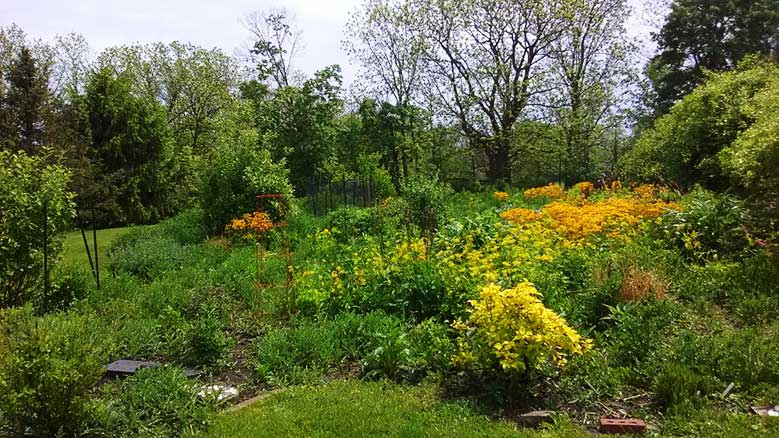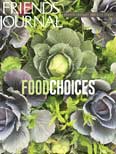
I have always cared deeply about animal welfare and environmental preservation. It dates back to childhood when my friends chided me for such things as protecting ants when I swept the sidewalk. I still do that! I believe all beings are the work of a creator, call it God or an elegant process; even the tiniest are perfect and endowed with a tenacious will to live.
Scripture says:
But ask the beasts, and they will teach you; the birds of the heavens, and they will tell you; or the bushes of the earth, and they will teach you; and the fish of the sea will declare to you. Who among all these does not know that the hand of the Lord has done this? In his hand is the life of every living thing and the breath of all mankind (Job 12:7-10).
Being raised in a family active in the Audubon Society nourished my love of nature and the beautiful earth we inhabit. Biology was my major at university, with an emphasis on ecology, a young field at the time, and I married a budding ecologist while still an undergraduate. His vocational path led to a friendship with the noted scientist and scholar Edward O. Wilson, whose contributions capture the essence of the critical condition of our biosphere. He is a prolific author of a vast variety of books. One he is especially known for is Biophilia, the title being a word he coined which he defines as “Our natural affinity for life—biophilia—the very essence of our humanity that binds us to all other living species.” The book reveals Wilson’s very personal response to nature and eloquently expresses his commitment to the conservation ethic. I identify with his intimate relationship to nature, so Wilson is a kind of idol for me.
Wilson’s forte is biodiversity. Why is it so crucial to life as we know it? Because that elegant process alluded to above is evolution, which depends on the diversity of the gene pool to do its work. Without it, species die, for there are no “fittest” to adapt to our changing world. I’ve become aware of the interrelationship between environmental preservation and dietary choice, and how biodiversity is topical to both. The following is one study that informs this observation.
Its comprehensive report was published online on January 16, 2019 in The Lancet, titled “Food in the Anthropocene: the EAT-Lancet Commission on healthy diets from sustainable food systems.” Nineteen Commissioners and 18 coauthors from 16 countries in various fields of human health, agriculture, political science, and environmental sustainability comprise the EAT-Lancet Commission, which convened for a period of three years. They contend that both planetary and human health preservation require “rapid adoption of numerous changes and unprecedented global collaboration and commitment: nothing less than a Great Food Transformation.”
They reason that worldwide agriculture occupies about 40 percent of the land, food production is responsible for 30 percent of greenhouse gas emission and 70 percent of water use, and that conversion of natural ecosystems to farmland is the major cause of species extinction. The Commission raises many important issues, but for the purposes of this essay, I discuss its focus on food choices and food production.
The Commission targets the goals of two international agreements. The UN Sustainable Development Goals, while far-reaching, mostly encompass the sustainability of the planet and improved human health. The Paris Agreement aims to limit global warming to well below two degrees centigrade. It also addresses the effects of climate change on human health. The aims of both require decarbonizing of the global energy system, and carbon reduction cannot be achieved without drastically changing the way food is produced. Food systems must become carbon sinks instead of carbon producers. Moreover, carbon sinks in natural systems must be protected. Both international agreements require food systems that support human health and planetary sustainability. Both also address the critical problem of worldwide hunger.
The Commissioners’ intent then is to develop global scientific targets for healthy diets from sustainable food production. They contend that in order to feed the world’s population by 2050, the amount of red meat and sugar consumed globally must decrease by about half, while doubling the intake of plant-based foods, such as nuts, fruits, vegetables, and legumes. Such dietary change would also improve human health. We’ve seen a global increase in unhealthy diets heavy in calories, processed meat, and other animal-sourced foods that are putting humans at risk of heart disease, obesity, and diabetes. The Mediterranean diet meets the commission’s criteria for a healthy choice to replace those heavy in calories and animal-sourced foods.
The report includes a lengthy section titled “Food production as a driver of biodiversity loss.” Many human actions contribute, but the primary threats to biodiversity are habitat loss and fragmentation due to human appropriation of land for food production. The authors determined that 80 percent of extinction threats to mammal and bird species are due to agriculture. They reiterate: “each additional species lost represents a fundamental reduction in resilience and capacity to respond to environmental change.”
Even before extinction, local species population decreases have deleterious effects. In the past 30 years, insect biomass has reduced by 75 percent and in the past 15 years, farmland birds by 30 percent. These losses negatively impact farmland ecology, food production, biodiversity, and gene flow.
The authors used mathematical models to extrapolate the extent to which anticipated land conversion to agricultural could contribute to further species loss. They concluded that agricultural expansion into forest areas and other natural ecosystems should be stopped. And they call for substantial revisions in agricultural practice.
They recommend agricultural biodiversity or agrobiodiversity. Also called crop diversity, it’s the practice of combining cultivated and uncultivated species together: that is, those we eat with those we don’t. The latter may include everything from soil microbiomes that store carbon and absorb excess nutrients to insects, birds, and mammals that pollinate crops and regulate pests. The former would ideally include a wide variety of edible plant species known for their exceptional nutritional value. Yet in many parts of the world, humans use mainly rice, corn, and wheat. Many more plant species are available such as quinoa, millet, sorghum, and teff that should become part of that doubled amount of plant-based foods humans need to consume as they reduce intake of red meat and sugar.
Earthcare activism is for me a natural fit for Friends. Earth stewardship and tenderness toward every life are supported by all of our testimonies. They incentivize and inspire us to act locally toward worldwide reform. Initially, hoping to raise awareness of the cruel conditions of factory farming, I convinced our Perry City (N.Y.) Meeting to minute the following:
Perry City Monthly Meeting is laboring under our concern about factory farming. We recommend that the Regional Meeting direct the committee(s) responsible for food at regional gatherings to make the vegetarian menu the default offering going forward with meat as an optional request.
The minute was well received at our 2018 Farmington-Scipio Regional Winter Gathering and the change in menu choices on the intake form became a reality. The majority of attendees at our following Spring Gathering appear content with the change. By 2019 meat options became virtually unnecessary.
For the two previous gatherings, I prepared a tri-fold display to raise consciousness toward the suffering of animals raised for human consumption. It asks, “Are cruelty and violence toward animals compatible with our testimonies for peace and nonviolence?” It illustrates the contrast between large concentrated animal food operations (CAFOs) and the increasing number of smaller farms where animals are raised humanely. (CAFO refers specifically to animal husbandry while “factory farm” can also include agriculture.) The display also captures many of the environmental hazards associated with CAFOs. This year I developed a second display to illustrate the natural progression from my first concern to the larger picture: the interconnectedness of food choices, biodiversity, and planet health.
Early in my activism, I discovered that the Friends World Committee for Consultation Quakers was already at work on earth stewardship. An excerpt from its Kabarak Call for Peace and Ecojustice generated at the World Conference of Friends in Kenya in 2012 follows:
In past times God’s Creation restored itself. Now humanity dominates, our growing population consuming more resources than nature can replace. We must change; we must become careful stewards of all life. Earthcare unites traditional Quaker testimonies: peace, equality, simplicity, love, integrity, and justice… We are called to work for the peaceable Kingdom of God on the whole earth, in right sharing with all peoples.
The strength of my leading increases with the ascension of my learning curve. At the New York Yearly Meeting’s Fall Sessions in 2018, I joined an Earthcare Working Group led by Margaret McCasland and Sheree Cammer. They had already developed a concept of ecological eating that makes the case for soil health and identification of foods that maintain balanced ecosystems. We hope to influence the yearly meeting to support food choices and other practices that sustain planetary health. We are widening the scope of the Perry City minute. Cognizant that it is unrealistic to expect exclusive vegetarianism, we explore the possibility of providing meat for our gatherings from sources that raise animals humanely and sustainably.
We are charged with a responsibility to provide for our progeny; to ensure they inherit a healthy, beautiful planet, full of the diversity of life that we have known. Are we ready to move toward the recommended food choices and other actions that support biodiversity and the promise of a future for all? We need not feel helpless in the face of a looming disaster. We can each be a part of the solution in ways that are even pleasurable.
Donna Beckwith of our meeting has initiated a permaculture project on acreage adjacent to our meetinghouse. By forming guilds of compatible and symbiotic native plants, we are creating habitat for pollinators and endangered species that will sustain itself over time. We are including edible and medicinal species to benefit ourselves and perhaps our neighbors as well.
I relish being mostly vegetarian while setting an example to others. A great deal of my energy is devoted to a large native plant garden where I live that, much to my delight, attracts pollinators and provides habitat for birds and other wildlife. To call it a passion is hardly adequate. Perhaps I say it best in “Magical Moment”:
A luscious balmy wind washed over me and enhanced the nourishing warmth of the air. It created a sensation that I was one with the sky, the bees, the butterflies, and creatures of the soil as I weeded my garden into the twilight hours of an October Indian summer’s day. I lost track of time, transfixed by a feeling of complete well being.
Until suddenly the mackerel sky caught the sun’s rays, transforming it to brilliant and glorious crimson, pink and gold, horizon to horizon. I had only a fleeting desire to capture the beauty on camera, and quickly dismissed the thought, because in my mind’s eye I wasn’t a passive observer. Rather, I was an organic piece of the landscape like a pioneer farmer on the prairie, toiling in harmony with earth and this heavenly display.







Thank you so much for this.. it is encouraging to see Friends come to this awareness and action.